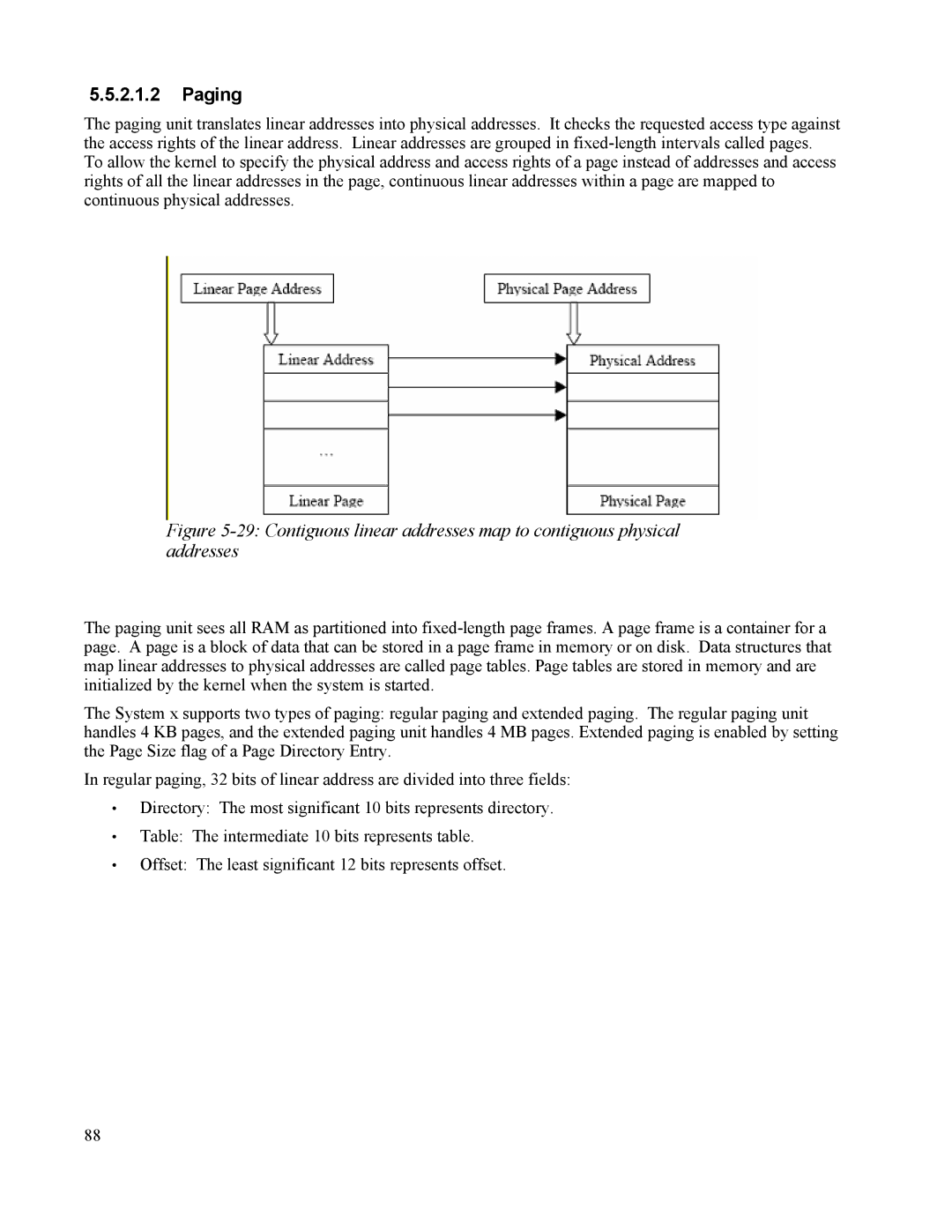
5.5.2.1.2Paging
The paging unit translates linear addresses into physical addresses. It checks the requested access type against the access rights of the linear address. Linear addresses are grouped in
Figure 5-29: Contiguous linear addresses map to contiguous physical addresses
The paging unit sees all RAM as partitioned into
The System x supports two types of paging: regular paging and extended paging. The regular paging unit handles 4 KB pages, and the extended paging unit handles 4 MB pages. Extended paging is enabled by setting the Page Size flag of a Page Directory Entry.
In regular paging, 32 bits of linear address are divided into three fields:
•Directory: The most significant 10 bits represents directory.
•Table: The intermediate 10 bits represents table.
•Offset: The least significant 12 bits represents offset.
88
